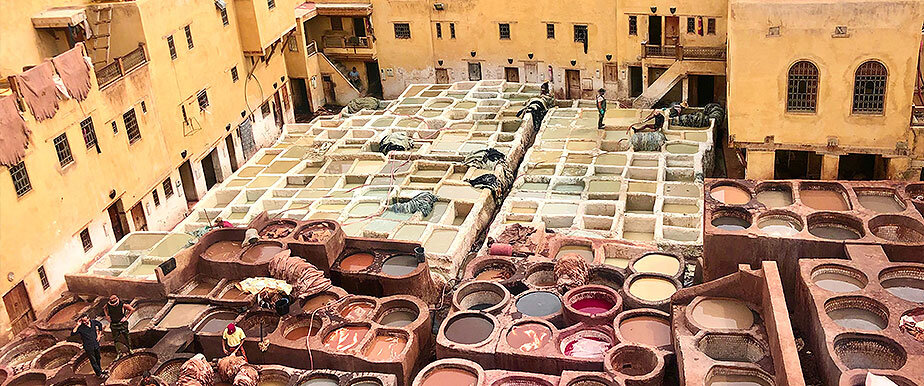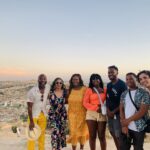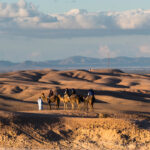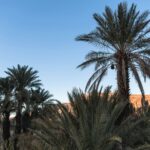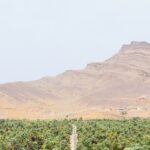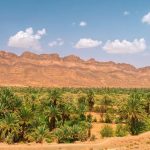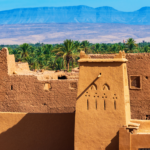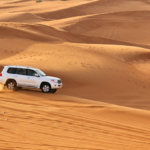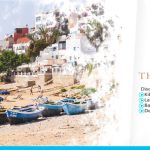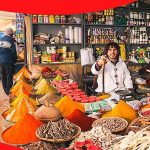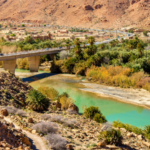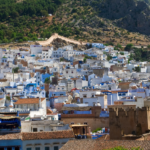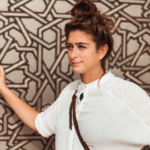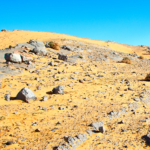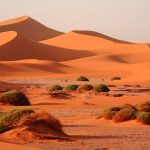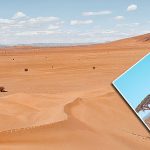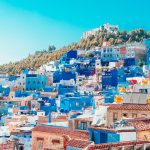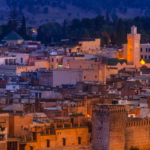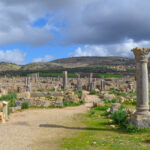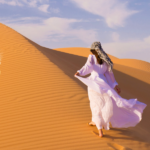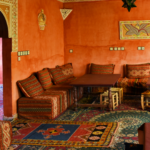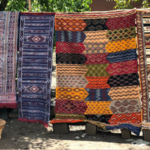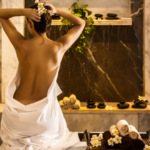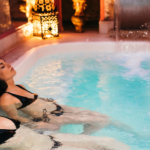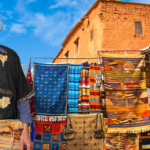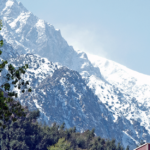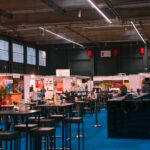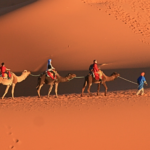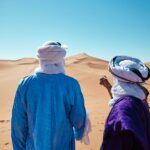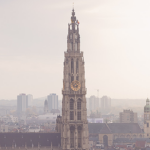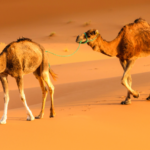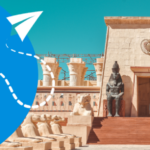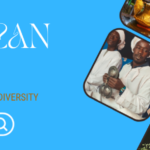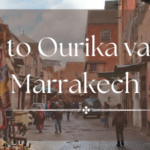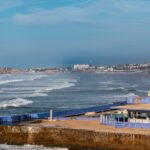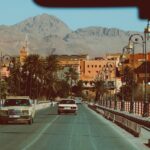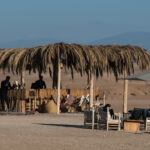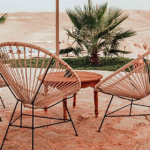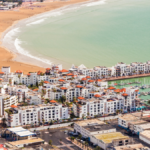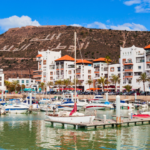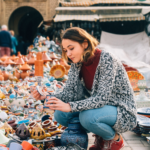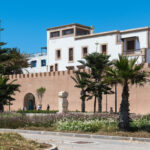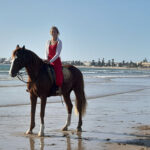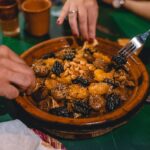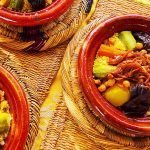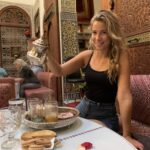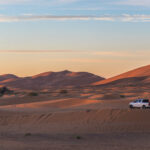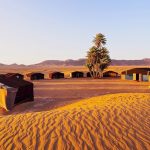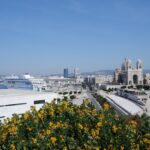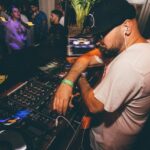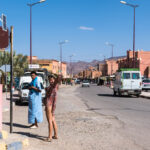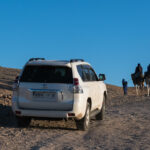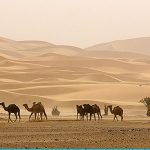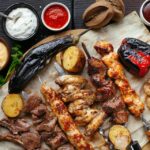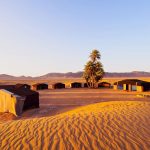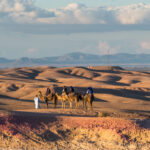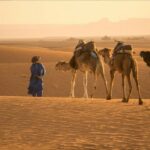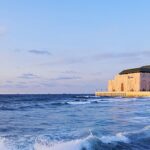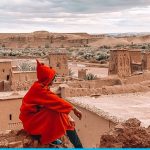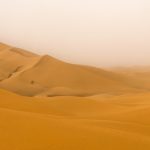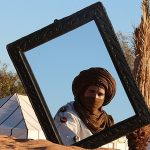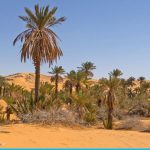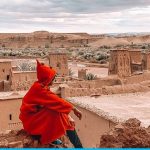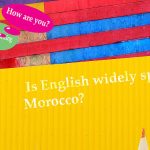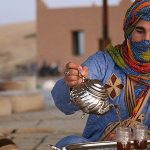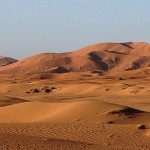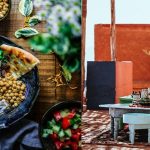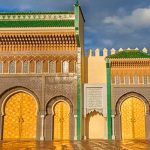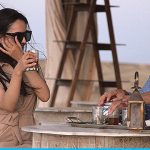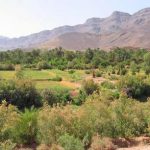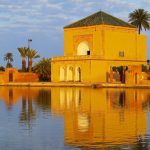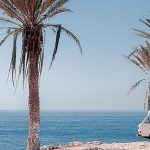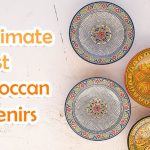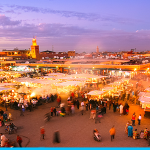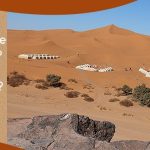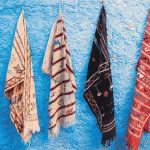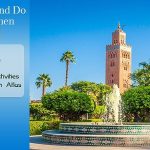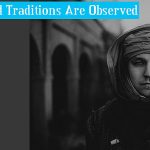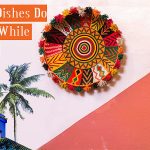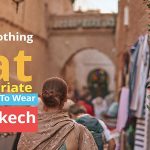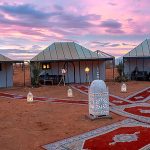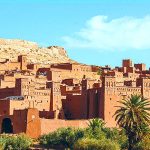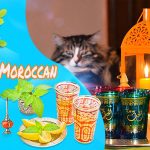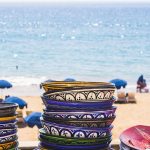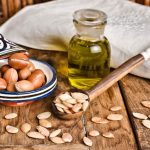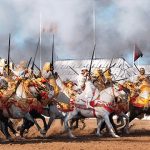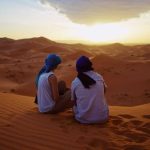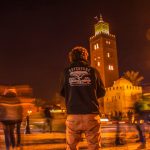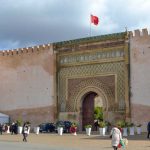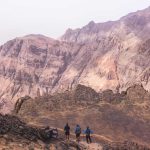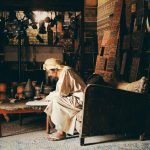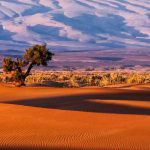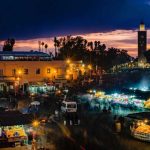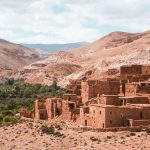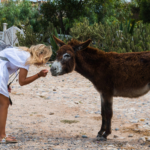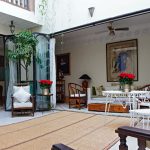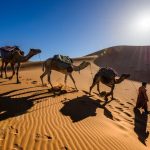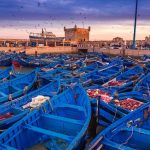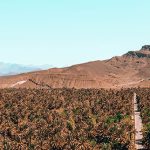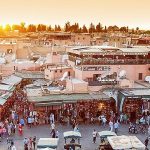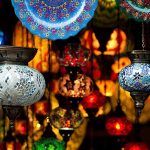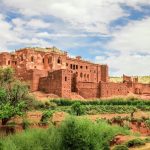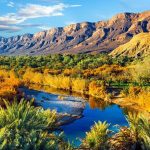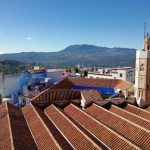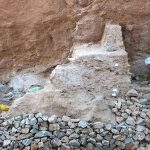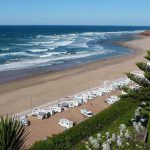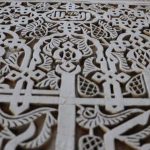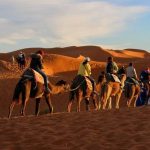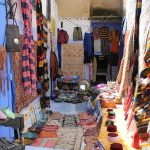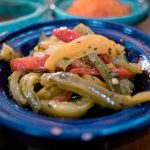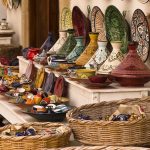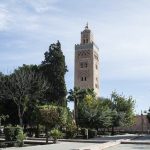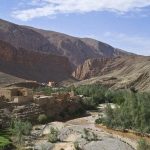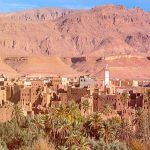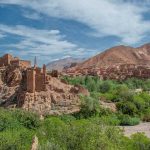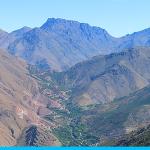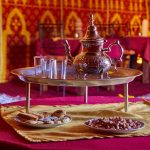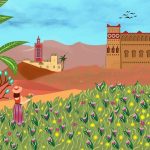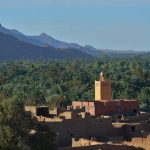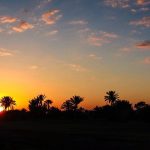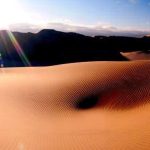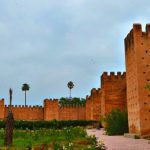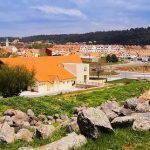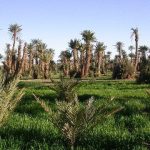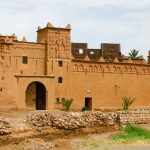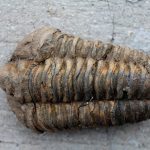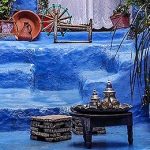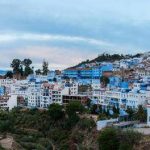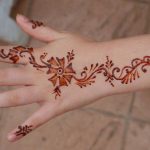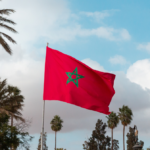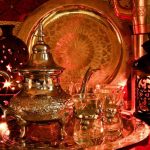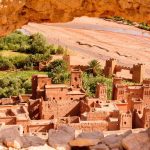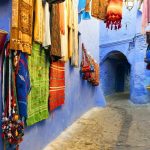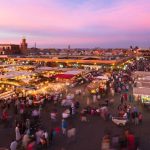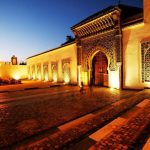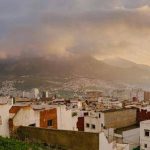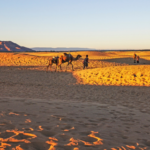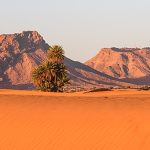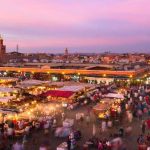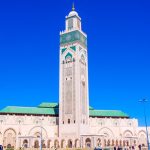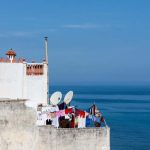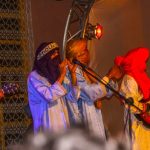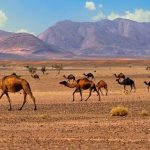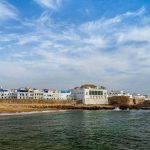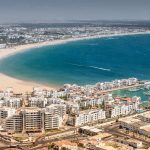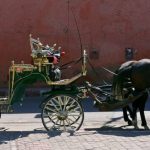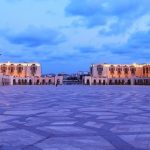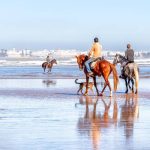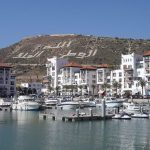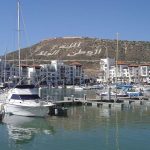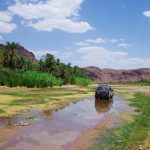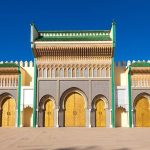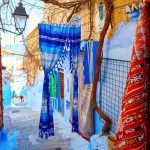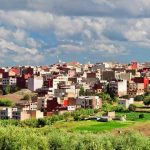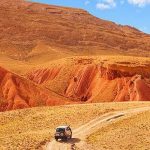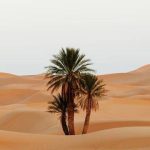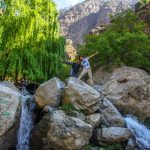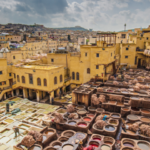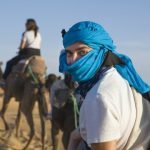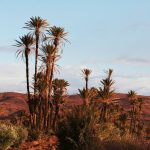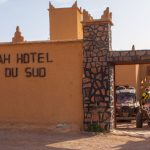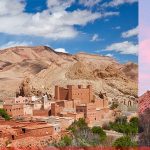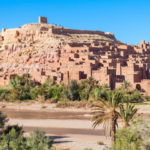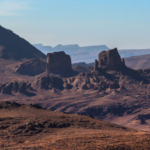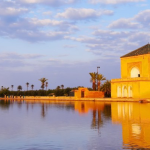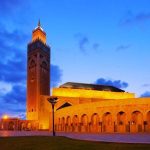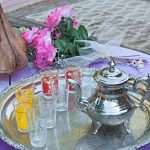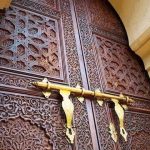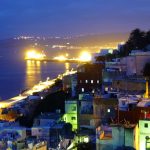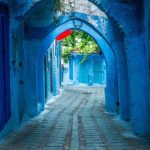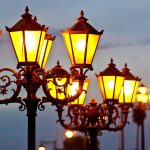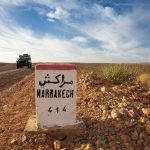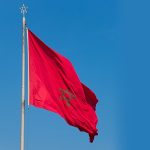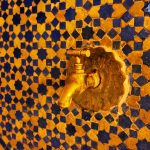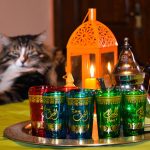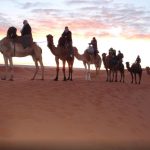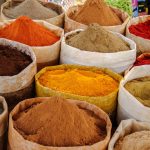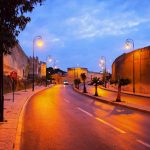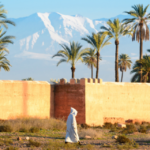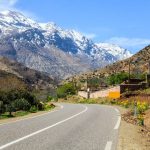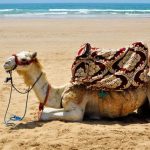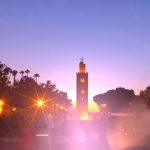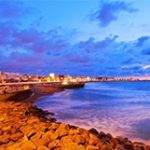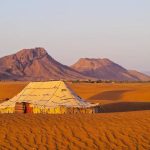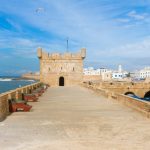Fez is the second-largest city in Morocco (by population), after Casablanca. Fez is one of the royal northeastern cities in Morocco which is also known as the country’s cultural and spiritual center. Fez has gained its popularity because it has the best-preserved old city in Morocco, the rambling medina of Fes El Bali, with medieval architecture, a lively market, and an old world atmosphere, which is surprisingly the world’s largest car-free urban sector and a UNESCO World Heritage Site. The transportation of goods is also done in medina style with the help of donkeys, mules, and handcarts. Fez has a Mediterranean climate with intense continental influence as it is located by Atlas Mountain. The warmest months of the year are July and August, and the coldest month is January.
Fez is a heritage city from the Middle Ages and has remained untouched for centuries. With increasing globalization, the residents of Fez are open to accepting and learning languages such as English and French in addition to speaking Arabic. If you’re eager to learn more about Morocco’s history, Fez should be on your list of places to visit in Morocco.
Table of Contents
- 1. What to do in Fez to make your trip one good episode?
- 2. Places to visit in Fez- City of Morocco.
- 2.1 Batha Museum
- 2.2 Bab Boujeloud
- 2.3 Medersa Bou Inania
- 2.4 Mellah
- 2.5 Fondouk el-Nejjarine
- 2.6 Nejjarine Square and Museum
- 2.7 Merenid Tombs
- 2.8 Tanneries
- 2.9 The University of Al-Qarawiyyin
- 2.10 The Royal Palace of Fez (Dar el Makhzen)
What to do in Fez to make your trip one good episode?
If you want to make the day more memorable and worth remembering for a lifetime, get yourself lost in the old city of Fez. Fez has small twisting and confusing streets like a maze where you are obvious of getting lost on entering and on exiting you will surely find yourself somewhere unexpected. Try this mini-adventure – Get Lost! And you can add this experience to your diary to revive in future
Stroll through the largest streets of Fez, Talaa Kibera. It’s not very crowded with tourists, but you can definitely get the feel of old Fez by visiting several souks.
If you haven’t tried a traditional Moroccan bath known as Hammam, you will surely wail. You can ask the locals and they will gladly direct you to the nearest Hammam. You must bring your own soap, towel, scrub, and other amenities you may need.
Visit one of the largest musical festivals which happens in June every year known as the Sacred Music Festival. This musical festival features music from all around the world.
How about indulging yourself in cooking Moroccan cuisine which is often considered one of the best cuisines in the world after French and Italian cuisine. Eating Moroccan food like couscous, tajine, or maybe a bowl of Harrira is a different thing and cooking that food is totally a new experience in itself. You can visit Fez Cooking School and make yourself your own lunch and meet some great people and take the authentic recipes with you. One of the best cooking classes is being conducted at café Clock, you can get to learn all sorts of things about Moroccan food.
Places to visit in Fez- City of Morocco.
Batha Museum
This museum is known for its artifacts, sculpted wood, jewelry, carpets, and pottery. It is housed in a Moorish palace from the 19th century.
Bab Boujeloud
This place is commonly known as the “Blue Gate” (as blue Fassi tiles are used on the outer side), serving as the main entrance to the old Medina in Fez. You can visit Talaa Kibera (big hill) on your left and Talaa Sghira(little hill) on your right. These roads lead you to the main fairs in the old medina and merge with each other ahead into the medina. Bab Boujeloud and its surroundings were constructed in the 20th century. The gate is blue on the exterior and from the interior it’s green. Both Facades are decorated with detailed zellij work.
Medersa Bou Inania
This school holds one of the greatest depictions of Marinid architecture from the 14th century. A guide is recommended when visiting Medersa Bou Inania, as non-Muslim visitors are often denied entry due to prayer times, but you can always see the royally decorated courtyard.
Mellah
The Mellah also known as the Jewish Quarter of Fez and was founded in 1438. There are very few Jewish people residing here today as most of them have settled in France or Israel. The Mellah is obviously worth a visit as you can get to see ancient ornate balconies and wrought-iron windows. You can also pay a visit to the Jewish cemetery which is also a must-see place, be cautious of the fake guides over there, so it’s always a good option to go with a knowledgeable guide and avoid being hassled.
Fondouk el-Nejjarine
It is also known as the “Wood Museum “ which faces the carpenter’s square. It was constructed in the 18th century. Tourists can stroll around and learn about the original woodwork and artifacts dating from the 14th century. Do not miss to visit the rooftop terrace as that will give you one of the finest views of Fez.
Nejjarine Square and Museum
It is situated in the middle of the medina near the carpenter district. This amazing square is dotted with Andalusian-style architecture known from the 18th century. The museum displays woodworking tools and the collection of wood and cabinetwork, from various regions of Morocco, both in ancient and modern forms.
Merenid Tombs
Located just outside the medina, the Merenid Tombs date back to the Merenid Dynasty that ruled Morocco from the 13th to 15th centuries. The crumbling ruins of the Merenid Tombs sit on a hill above Fez, affording expansive views of the city and countryside. The tombs have beautifully detailed carvings, but the tourists come here mainly for the environment and the view.
Tanneries
On warm days you do not need directions to Tanneries as the smell will take you there.“The smell is free… but if you want to buy, you have to pay,” Thami says. It is quite captivating to stand upon the rooftops and watch the tanners using nothing but their bare feet to dye the leather. Leather tanneries in Morocco still follow the ancient system of treating leather. Hides are soaked for a few days in vessels full of cow urine, quicklime, water, and salt before being picked at and dried. Then they are sent to a different set of vessels filled with diluted pigeon excrement and water to be softened. With nothing but their bare feet and hands, tanners knead the skins to their desired softness. You are surely going to end up buying handmade Moroccan leather goods.
The University of Al-Qarawiyyin
The Al-Qarawiyyin (al-Karaouine) Mosque and University in Fez, Morocco was founded by Fatima al-Fihri, the daughter of a wealthy Tunisian in 859 AD. UNESCO considers it to be the oldest university in the world. The libraries have several extremely valuable documents dating from 780 A.D. including the Al-Muwatta of Malik written on gazelle parchment. Non-Muslims cannot enter, but it’s possible to peek in at the beautiful interior that includes two chandeliers that were originally church bells from Andalusia. Madrassa of Al-Qarawiyyin is located next to the mosque in the middle of the medina. This is one of the only Madrassa’s opened to non-Muslims. A Madrassa is a school of learning and instruction. This wonderful Madrassa is decorated with glazed tiles and plaster. It is referred to as one of the oldest functioning universities in the world.
The Royal Palace of Fez (Dar el Makhzen)
This palace was built in the 17th century, this palace can be appreciated only from the outside. But behind that door is actually the real things to see, the extensive landscapes, painted ceiling.
Join countless satisfied travelers who have experienced Morocco with us. We customize every detail to make your Moroccan adventure uniquely yours. Explore the Magic of Morocco with us!

